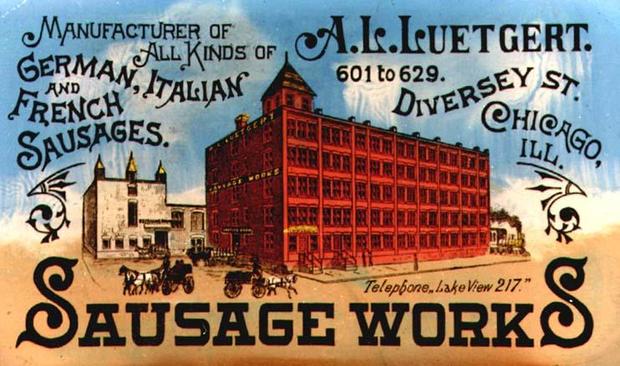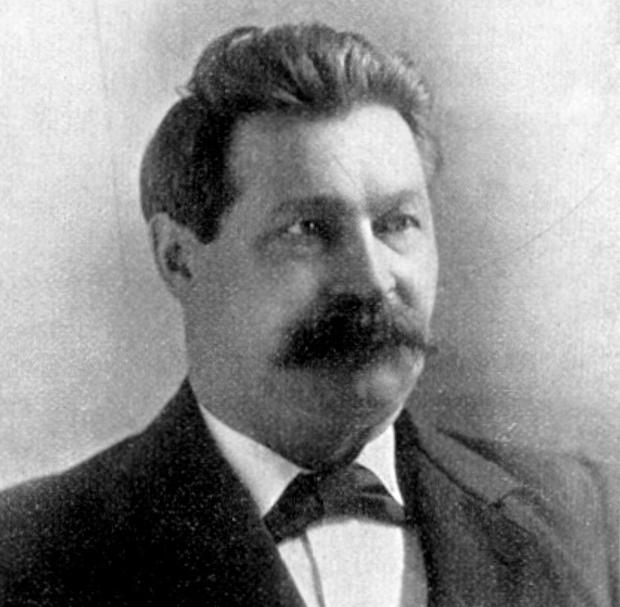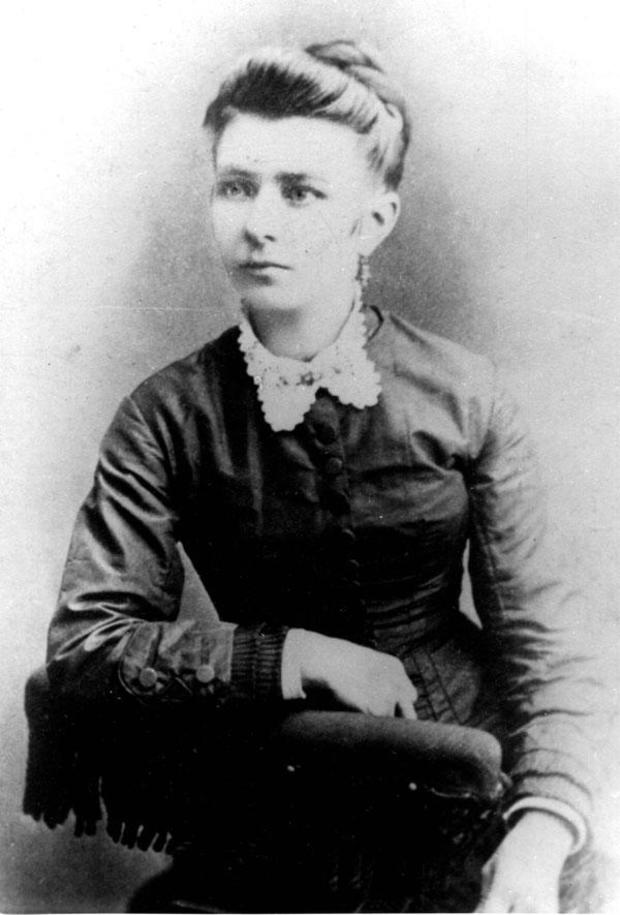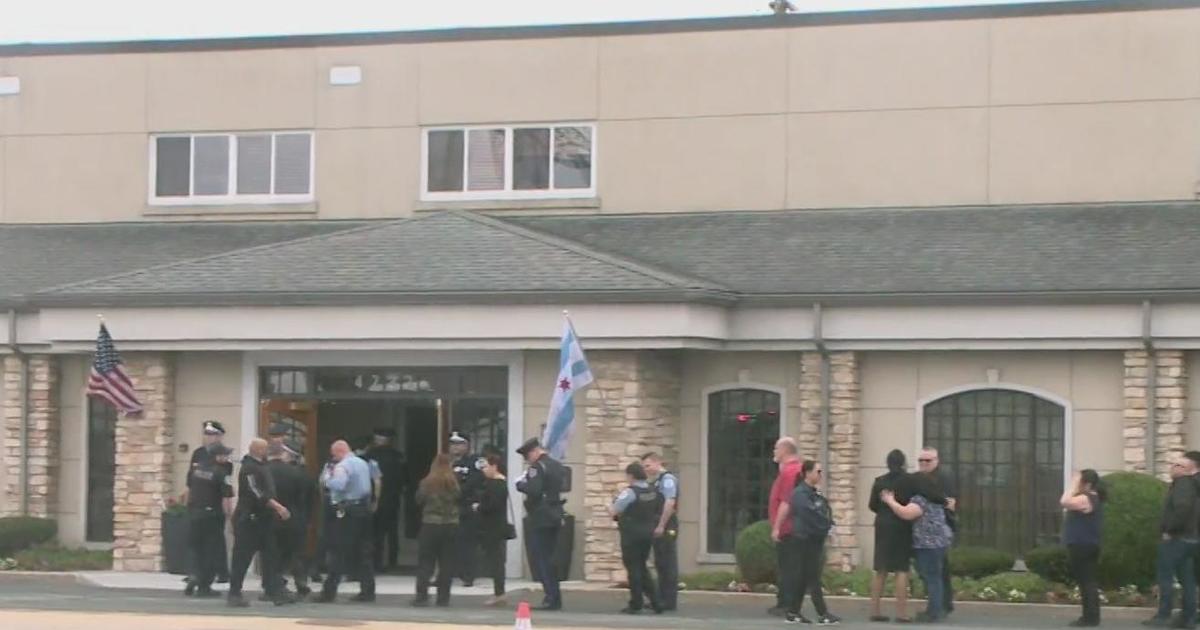Chicago Hauntings: The grisly story of Adolph Luetgert murdering his wife in his sausage factory
CHICAGO (CBS) --
"Oh Dunderbeck, oh Dunderbeck how could you be so mean
"To ever have invented the sausage meat machine?
"Now all the neighbors' cats and dogs will never more be seen
"'Cause they've been ground to sausage meat in Dunderbeck's machine."
Remember that old camp song, best known perhaps for a midcentury version by Tom Glazer & the Do-Re-Mi Children's Chorus? Didn't it always seem awfully gory and macabre – especially for a kids' song?
Well, it happens there's a ghastly Chicago murder case dating back to 1897 that hews a little too close to the events of that song. The killer's name wasn't Dunderbeck – it was Luetgert, Adolph Louis Luetgert specifically. And he didn't actually grind anyone into sausage, though there is a widespread and persistent myth that he did.
But he was convicted of murdering his wife and dissolving her body in a vat full of chemicals in his factory. And there were accounts going back to the turn of the last century that after that gruesome crime – and after Luetgert had been sentenced to prison and also died – an apparition haunted the old factory.
For this all-new edition of our Chicago Hauntings series, we were joined by Robert Loerzel – author of the 2003 book, "Alchemy of Bones: Chicago's Luetgert Murder Case of 1897."
Go to 1735 W. Diversey Pkwy. today and you'll find the Regal Loft condominiums. Back in the 1890s when the surrounding area was full of industry, that same building was the A.L. Luetgert Sausage Works – which touted itself as a "manufacturer of all kinds of German, Italian, and French sausages."
Luetgert was born Dec. 27, 1845, in Gütersloh, Westphalia, in pre-unification Germany. He came to the U.S. as a young man – arriving in Chicago around the time of the Great Chicago Fire of 1871.
Luetgert said in his own life story – as taken from testimony in his second murder trial – that he found worked in a succession of leather tanneries and later started a saloon at the corner of Clybourn and Webster avenues.
Luetgert said in testimony that his first wife died in 1877, and he married his second wife, Louisa Bicknese, the following year. He said he went on to open a sausage business at North and Clybourn avenues, and then moved to a farm near Elgin for a while before returning and opening a new sausage factory at North and Sheffield avenues.
He bought the property at Diversey Parkway and Hermitage Avenue in 1892 and built a new factory – putting down $30,000 for the land and $140,000 for construction, Loerzel wrote.
"He supposedly came up with his secret sausage-making recipes – I don't know, it's probably him bragging about how great his sausage was," Loerzel said. "He claimed to have invented summer sausage, but you know, I'm not so sure about that."
The story goes that Luetgert sold some of his sausage at the World's Columbian Exposition of 1893. His operation was so successful that he became known as the sausage king of Chicago.
A Chicago Tribune article from Oct. 19, 1897, provided a window into the deference Luetgert received from neighbors:
"They gave him wide berth when he went along the sidewalk with his Great Dane dogs panting after him. When he spoke to them, they pulled off their hats. He employed more men than anyone for almost a mile around, and they the neighborhood looked on his factory as the place where all the money in circulation originated."
Adolph and Louisa lived in a house just south of the factory, which no longer stands, Loerzel said.
On May 1, 1897, Louisa disappeared.
"That prompted a huge, sensational mystery that the newspapers were obsessed with – what happened to Ms. Luetgert?" Loerzel said.
Adolph claimed Louisa had just run off and abandoned him and the family because they were having economic challenges, Loerzel said. People all around Illinois and the other states began calling Chicago Police and local newspapers with reports of women they'd spotted who they thought were Louisa Luetgert.
But not long afterward, Adolph Luetgert was charged with murdering his wife.
"In the basement, they had these large vats, which they used for curing sausage – and they weren't being used at the time. His factory had been shut down temporarily because of bad economic times," Loerzel said. "But he went into the basement, according to police, and put her body in this vat that was filled with potash. He'd had his workers make up the solution ahead of time – which kind of raises the question, was he planning to murder her? Did he have all this set up to get rid of the body?"
The motive that was determined for Luetgert killing his wife was an enduring mystery of the case, Loerzel said.
Luetgert went on trial – in a sensational circus with coverage that filled the pages of the Chicago newspapers and even attracted media attention from New York and London.
Luetgert's first trial ended in a hung jury – the jurors could not decide if he was guilty or not. A second trial was held, and that time, Luetgert testified in his own defense.
This may not have been a good idea.
"The stories he told about how he was just trying to make some soap that night in the basement really didn't fly with the jury," Loerzel said.
On Feb. 9, 1898, Luetgert was convicted and sentenced to life in prison – despite the fact that some wanted to see him hanged, Loerzel said. He was sent to the Joliet State Prison, where he died of natural causes on July 7, 1899.
Back at the old Luetgert sausage factory, there were reports of hauntings as long ago as the turn of the last century. In 1901, some Chicago Police officers received a report that someone had seen a light moving around inside the factory building, Loerzel said.
Two officers were sent to the factory and saw a light in the windows, and they went in with guns drawn to investigate, according to a contemporary news report published in the Des Moines Daily News on Thursday, April 4, 1901:
"Immediately, a light darted before them as if it were a streak of lightning. It seemed to pass from the first floor down the stairway into the basement. The officers followed, and when they got into the basement, they saw the light again. It was in the very place where stood the famous middle vat in which the body of Mrs. Luetgert is thought to have been disintegrated. [Detective John] Quinn rushed for it, but it vanished, and in less time than it could be realized was in a corner fifty feet away. The officer again approached it, and this time was able to get within a few feet of the apparition, which all the while was distinctly that of a woman, as the officers sprang for it. His arms were thrown about a small keg and his head went through a window pane."
Loerzel admits that he is a skeptic about ghost stories.
"With a story like this, you want to have a firsthand report about it," he said.
In a 2012 column, Adam Selzer of Chicago Ghost Tours also claimed that Luetgert himself had apparently seen ghosts in his own factory and had accused police of "hiring" ghosts to scare him. Many decades later, a family who lived in the building in the 1970s reported stories about poltergeist activity in the basement, Selzer wrote.
Selzer wrote that he had not heard much about ghosts from current residents.
Meanwhile, Loerzel said, one reason the Luetgert case was important beyond its sensational gore was the fact that Luetgert was charged and brought to trial despite the lack of a body.
Police did find some bone fragments in a search of the basement of the factory. Later, George Amos Dorsey, an anthropologist from the Field Columbian Museum of Chicago – the predecessor to the Field Museum of Natural History – testified at Luetgert's trial. He said the fragments found were human bones and could point out where they would fit on a human skeleton, according to Loerzel.
But some were skeptical of testimony by scientists, and wondered whether the bones might just have been parts of a pig that would belong in a sausage factory, Loerzel said.
As Loerzel points out in "Alchemy of Bones," the Luetgert case also led to a lot of public revulsion about sausages. Many butchers reported people just didn't want to buy sausage.
The longstanding urban legend was that Luetgert had ground his wife into sausage – though he was never actually accused of doing so.
"But you can see how people would make that sort of jump in logic that he was a sausage maker, he had a sausage factory, his wife disappeared, he dissolved her body in there," he said.
Also, remember how H.H. Holmes' "murder castle" in Englewood was purported to have burned to the ground – when in fact, it was torn down to make way for the Post Office that's there now? There is a similar story of a fire destroying the Luetgert factory in 1902 – but that didn't happen either.
There was a fire at the Luetgert factory in 1904, but the building only gutted the interior, Loerzel wrote. The building was converted into condos in the 1990s.
Some of the other bases for ghost stories in this case are quite dubious, to say the least. Selzer wrote in 2012 that there were also some involving the old Flounders Bar & Grill at 2201 N. Clybourn Ave., where Luetgert had once had a tavern. Selzer wrote that some ghost tour guides told a story that a butcher shop that sold "Louisa links" was located there, and others claim he murdered several other family members in the building, Selzer wrote. But there are no historical claims or evidence that Luetgert murdered any other family members – and again, he was never actually accused of making his wife into sausage.
More information on Loerzel's "Alchemy of Bones" can be found here.






